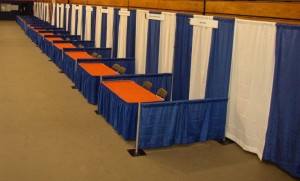The Myth of Seat-Time
This week I was reading about Adam Caplan, the star-thinker behind Model Metrics–a “cloud-computing” company. (They help businesses match their processes with the most efficient combination of technology.)
Not too long ago, Caplan’s company was growing so fast they had to move their base of operations. It wasn’t surprising either. After adding 120 employees along the way, it was easy to see why they might need a ginormous space with lots and lots of offices, right?
Not at all, as it turned out.
Caplan chose a high-ceilinged headquarters with exposed brick walls that was NOT big enough to house desks for all his employees even if he wanted it to.
Why go forward with an intentional seat shortage?
They had long embraced the idea that creativity and productivity don’t REALLY have anything to do with how much time their employees spend sitting at desks. So they just decided to let their space reflect that.
This speaks to our philosophy in partnering with organizations for next year’s STORY conference. Traditionally, events tend to sell “tables”–a certain amount of floor space where supporting companies can construct a display or booth of some kind.
But, similarly, we don’t necessarily believe that productivity always equates to time sitting behind a table. So STORY is pioneering some sponsorship opportunities that may not be display-heavy, but that allow organizational reps to connect with conference attenders in more natural ways that better display their creativity.
This coming year, our intentional seat shortage may be our biggest strength.
(By the way, Model Metrics’ move to organize space this way even got Workplace Dynamics to list Model Metrics in the top tier of Chicago workplaces in a recent survey conducted for the Chicago Tribune.)


